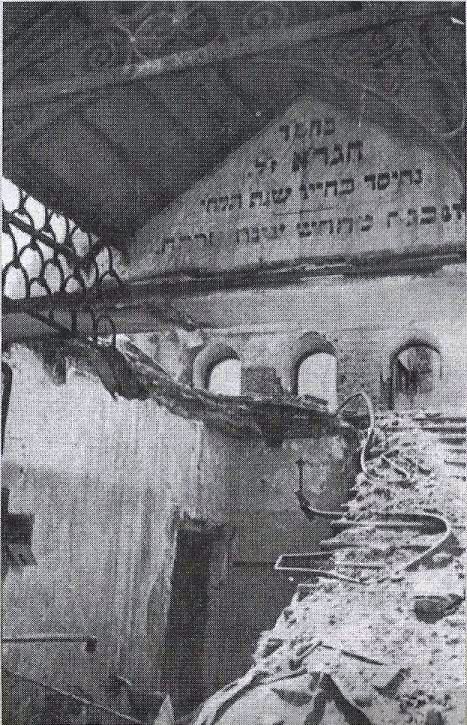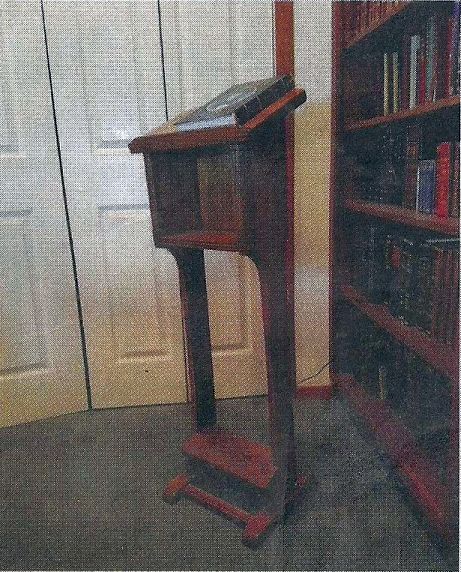Last week we reported on archaeological digs in Vilna to uncover the central shul of the community, the Stadt Shul. We wrote that the Nazis destroyed the Stadt shul. However Rabbi Eliach, head of the Machon Moreshes Yeshivos, corrected us to say that the Nazis only gutted to buildings and looted their contents. It was the Soviets who actually destroyed them after the war.
Holocaust survivors who came to Vilna after WWII, were shocked to find the devastation and destruction of the illustrious, ancestry-rich community.
Over a hundred shuls and minyanim had served the city's 58,000 Jews between the two World Wars. Each neighborhood boasted its own central synagogue, while a great synagogue and its subsidiary communal organizations were housed in the spacious Shulhoif consisting of the main shul of Vilna and eleven smaller shuls and shteiblach or kloizelach, as they were called. It also contained a mikveh, as well as the famous Strassun library.
All these had been vandalized and demolished by evil hands - all except for the shul of the Vilna Gaon which, while severely damaged, its roof destroyed entirely, stood on its foundations, with a few walls still intact. Amazingly, the wall which bore the sign "Beis Medrash HaGra" still rose up proudly from among the ruins (see photo).
Among the returners to Vilna after the war was HaRav Yisrael Zev Gustman, one of Vilna's young dayanim, whose 25th yahrtzeit falls this week. He took over the helm of responsibility for the survivors by organizing communal services and individual help. He dealt with the difficult problems of marriages and agunos.

The entrance to the Gra Kloiz as it appeared after the war, before its collapse
With the approach of the Yomim Noraim, HaRav Gustman began clearing away the debris from part of the ruins so as to prepare what remained of the Gra Kloiz for prayer services. In later times he told that the first postwar Yom Kippur had over three thousand men and women attending the prayers. He addressed this huge crowd of broken, dispirited people with strong words of encouragement and comfort.
Thousands of Jews davened there that year. Then suddenly, right after Yom Kippur, the entire building collapsed, leaving nothing but piles of rubble. The entire town was in an uproar over the apparent miracle. If the building had collapsed on Yom Kippur, chas vesholom, the area would have become a huge graveyard.
HaRav Gustman asked some building engineers about what had happened, and he determined that according to all normal rules of nature, the building should have collapsed long before it did. Apparently, he later told his talmidim in Jerusalem, HaKodosh Boruch Hu wanted the survivors to be able to daven one last time in the beis medrash of the Gra on Yom Kippur. After it had completed its task, it was no more.
The destruction of the Shulhoif was in three stages, beginning in the summer of 5701 (1941) with the Nazi conquest. Together with the local populace, soldiers and citizens plundered everything of value within the structure, leaving that, for the meanwhile, intact.
It was the Soviets who destroyed this splendid beis mikdash me'at, in two separate stages. The first took place in the summer of 5704 when the Red Army conquered Vilna from the Germans; its planes bombed the entire shul compound mercilessly, wreaking havoc.
All this damage could have been reversed and the place rehabilitated had it not been for the Soviet atheists, who despised any scent of religion and systematically sought to eradicate it from the world.
A few relics of the loot from the shul are on exhibit today in the HaGaon of Vilna Museum, namely: the door of the aron kodesh, a shtender and a bas relief of the Ten Commandments.
Some facts indicate that other religious artifacts including shtenders from the Gra Kloiz were transferred in the nick of time to the Coor Shul, the only shul in all of Vilna which survived the war intact. An American Jew boasts one of these rare shtenders in his possession, to which he attributes a sublime, exalted and heavenly inspiration when he studies his daily shiur on it with a chavrusa.

The shtender from Vilna, as it appears today in Monsey




